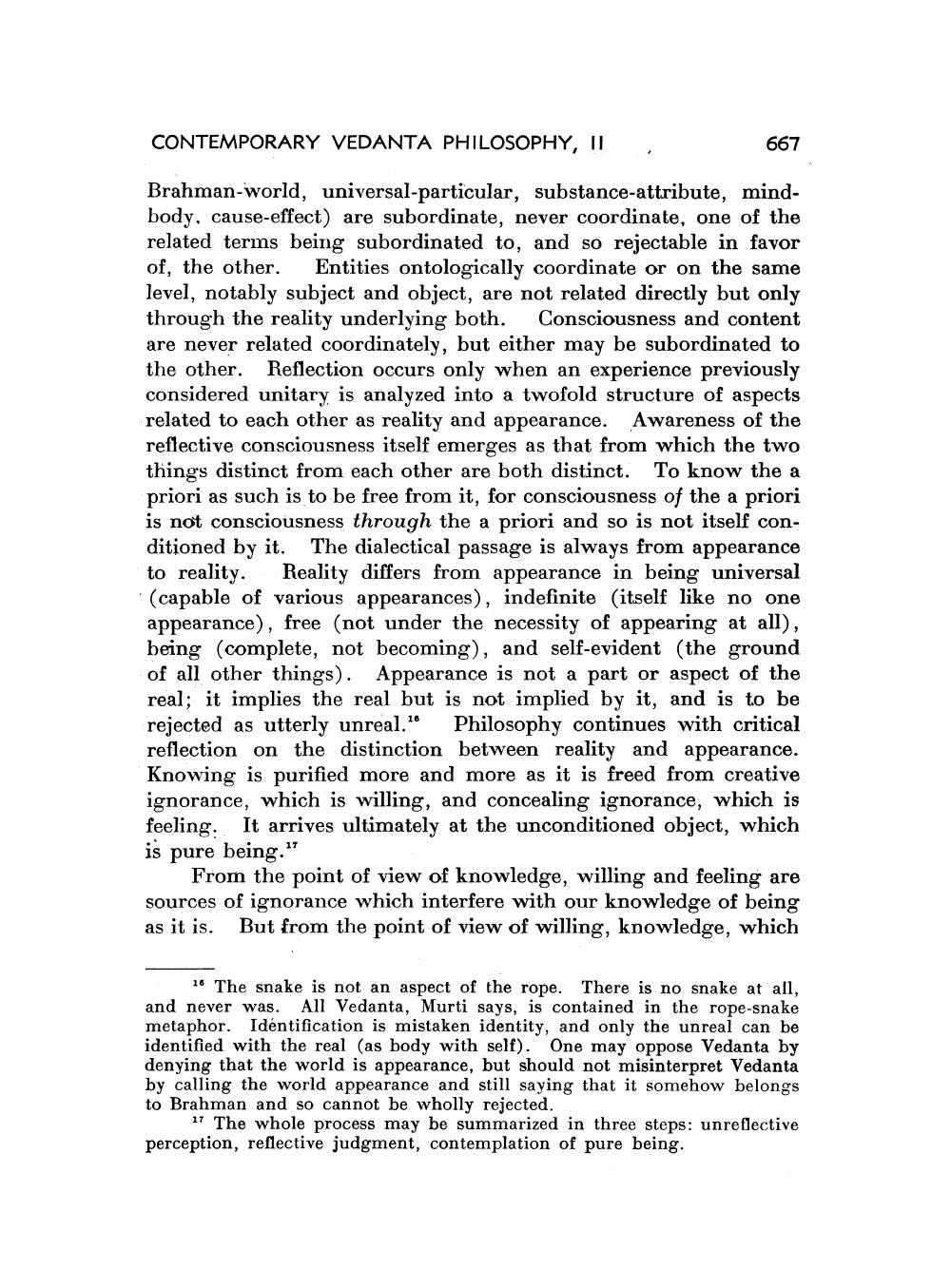________________
CONTEMPORARY VEDANTA PHILOSOPHY, II
667
Brahman-world, universal-particular, substance-attribute, mindbody, cause-effect) are subordinate, never coordinate, one of the related terms being subordinated to, and so rejectable in favor of, the other. Entities ontologically coordinate or on the same level, notably subject and object, are not related directly but only through the reality underlying both. Consciousness and content are never related coordinately, but either may be subordinated to the other. Reflection occurs only when an experience previously considered unitary is analyzed into a twofold structure of aspects related to each other as reality and appearance. Awareness of the reflective consciousness itself emerges as that from which the two things distinct from each other are both distinct. To know the a priori as such is to be free from it, for consciousness of the a priori is not consciousness through the a priori and so is not itself conditioned by it. The dialectical passage is always from appearance to reality. Reality differs from appearance in being universal (capable of various appearances), indefinite (itself like no one appearance), free (not under the necessity of appearing at all), being (complete, not becoming), and self-evident (the ground of all other things). Appearance is not a part or aspect of the real; it implies the real but is not implied by it, and is to be rejected as utterly unreal. Philosophy continues with critical reflection on the distinction between reality and appearance. Knowing is purified more and more as it is freed from creative ignorance, which is willing, and concealing ignorance, which is feeling. It arrives ultimately at the unconditioned object, which is pure being."
From the point of view of knowledge, willing and feeling are sources of ignorance which interfere with our knowledge of being as it is. But from the point of view of willing, knowledge, which
16 The snake is not an aspect of the rope. There is no snake at all, and never was. All Vedanta, Murti says, is contained in the rope-snake metaphor. Identification is mistaken identity, and only the unreal can be identified with the real (as body with self). One may oppose Vedanta by denying that the world is appearance, but should not misinterpret Vedanta by calling the world appearance and still saying that it somehow belongs to Brahman and so cannot be wholly reiected.
17 The whole process may be summarized in three steps: unreflective perception, reflective judgment, contemplation of pure being.




